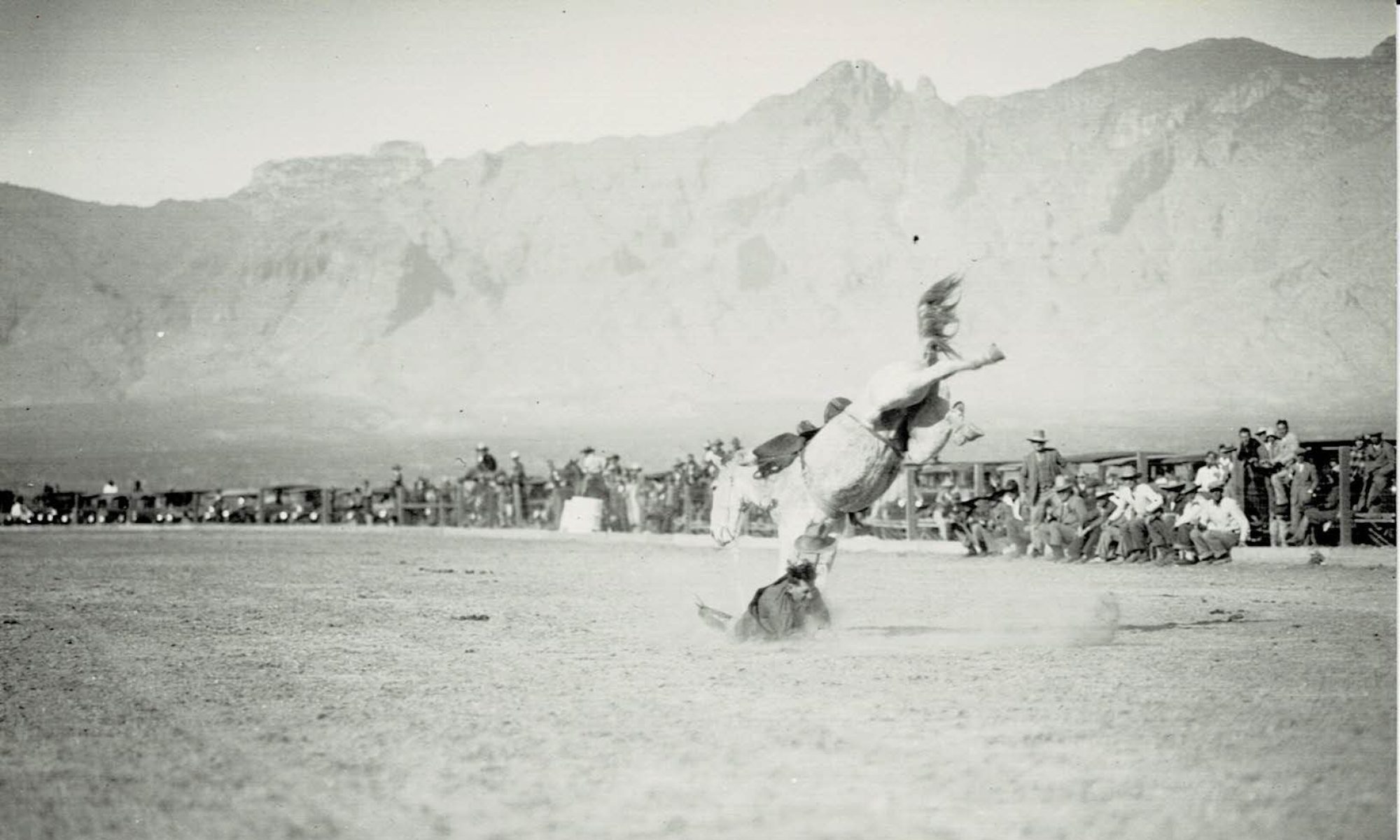Chiefly, below are rare and one-of-a-kind photographs of a Tucson Arizona area landmark, Colossal Cave. In general, these vintage photographs are from May 1928. In fact, the first photograph features a cave guide sitting on the tire of her automobile. By all means, the automobile is a 1928 Ford Model A with Arizona Copper license plate of 1928. Markedly, if you look under the carport to the left, next to the table, there is a black wrought iron door which leads explorers into the cave.
*To enumerate, you can examine a close up of these photographs, by hovering your mouse over the photograph, clicking the left button on your mouse, and then in the next tab, left click again.






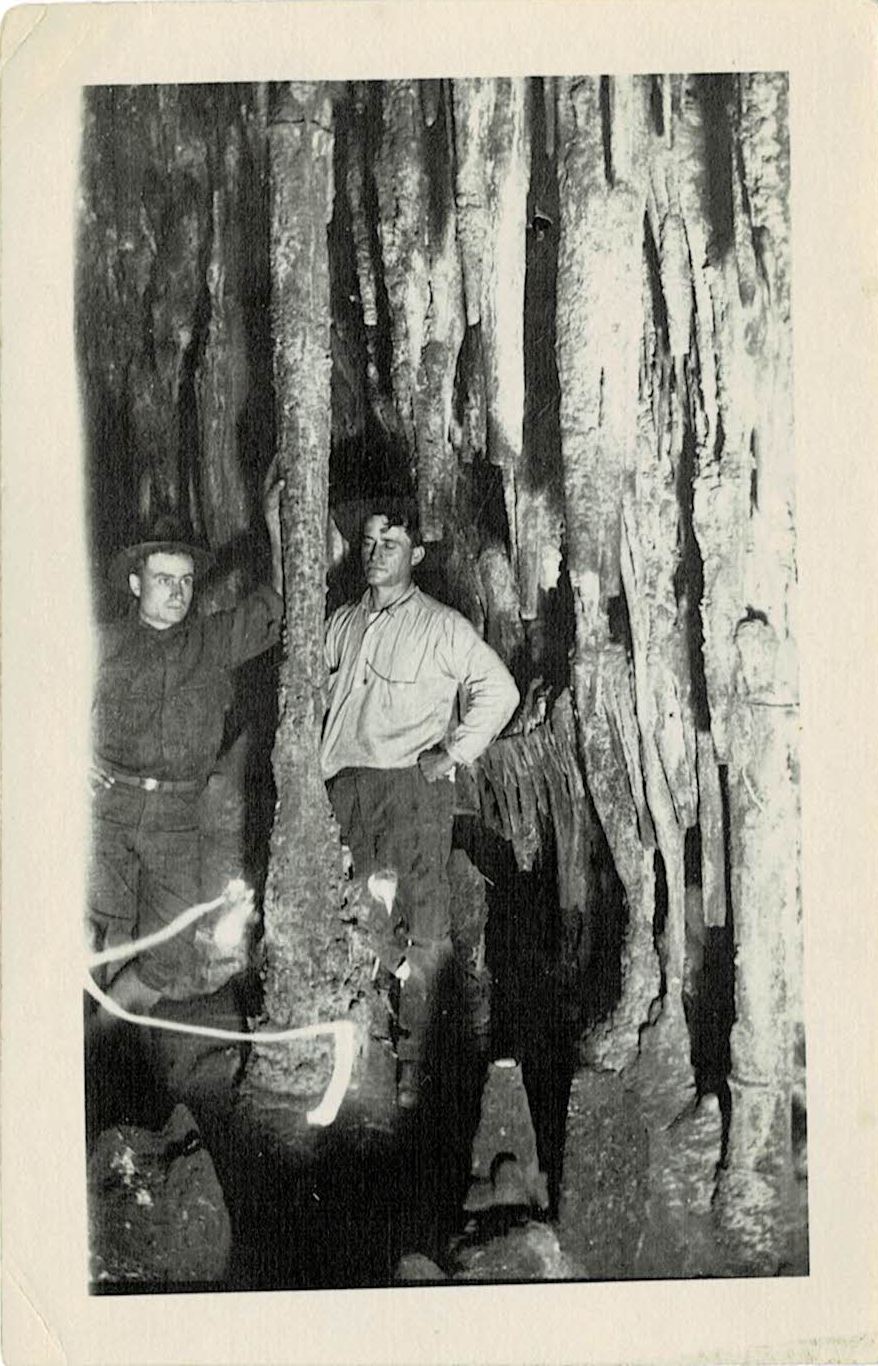 Indeed, early photograph of explorers Everett and friend inside of Colossal Cave just outside of Tucson, Arizona
Indeed, early photograph of explorers Everett and friend inside of Colossal Cave just outside of Tucson, Arizona
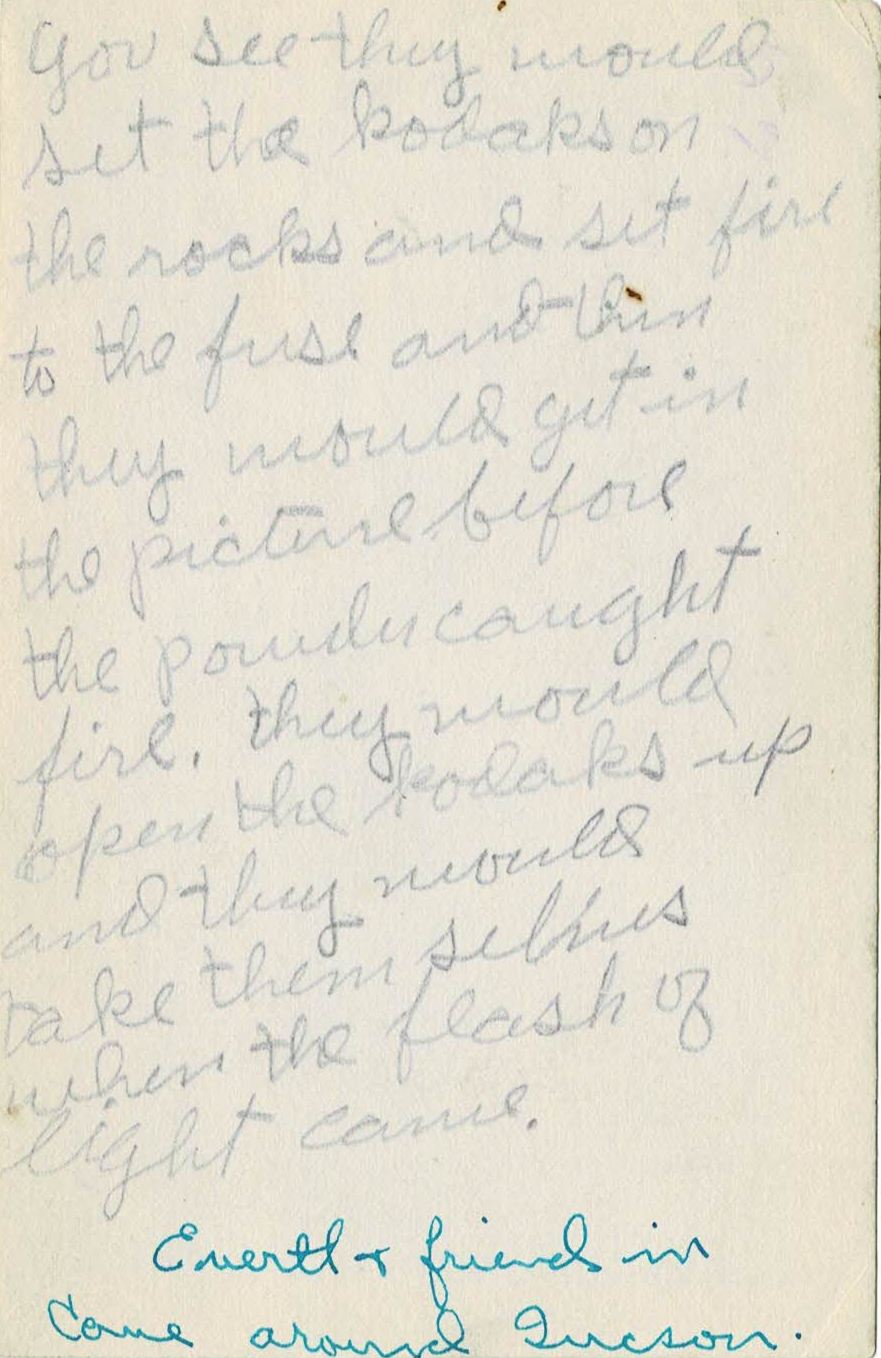 In this case, here is an amazing account of how “Kodak” camera photographs are shot inside “cave around Tucson” using gunpowder as the light source to create the photograph! Undoubtedly, the caption refers to Colossal Cave near Tucson, Arizona
In this case, here is an amazing account of how “Kodak” camera photographs are shot inside “cave around Tucson” using gunpowder as the light source to create the photograph! Undoubtedly, the caption refers to Colossal Cave near Tucson, Arizona 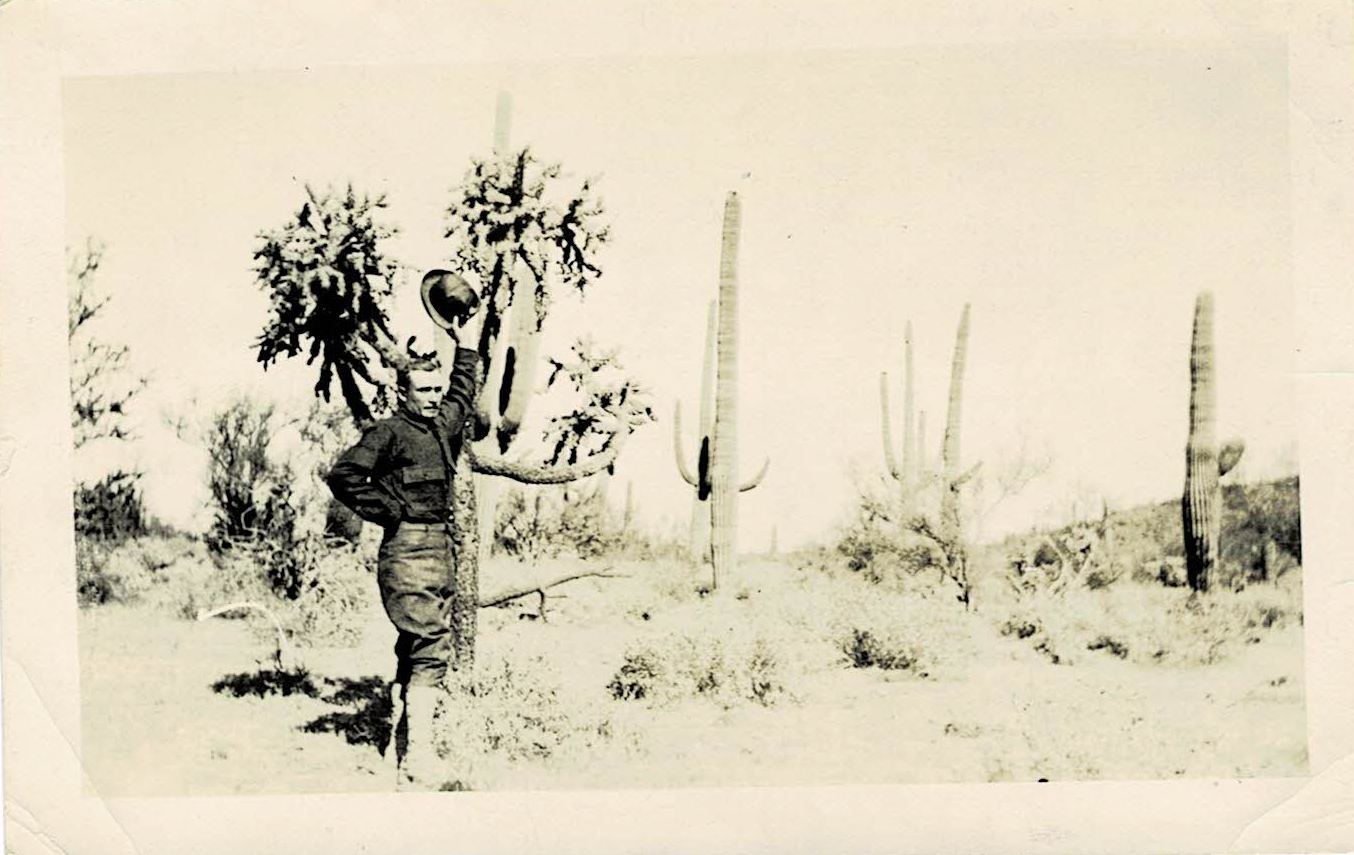 Certainly, this is the same cave explorer “Everett” outside Colossal Cave, standing next to a “tree cactus”
Certainly, this is the same cave explorer “Everett” outside Colossal Cave, standing next to a “tree cactus” 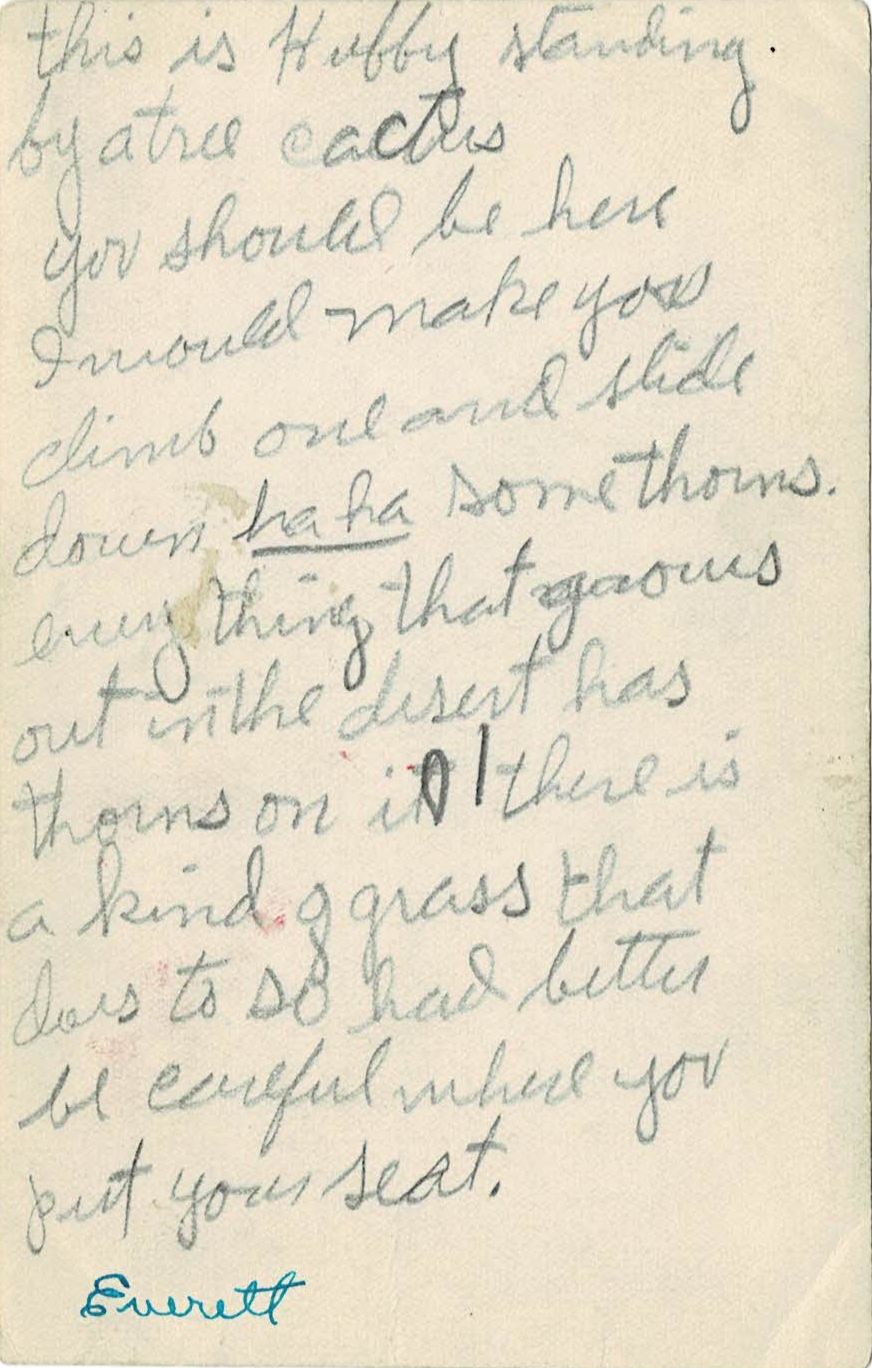 Rear of photograph of Everett in the desert outside Tucson, Arizona
Rear of photograph of Everett in the desert outside Tucson, Arizona
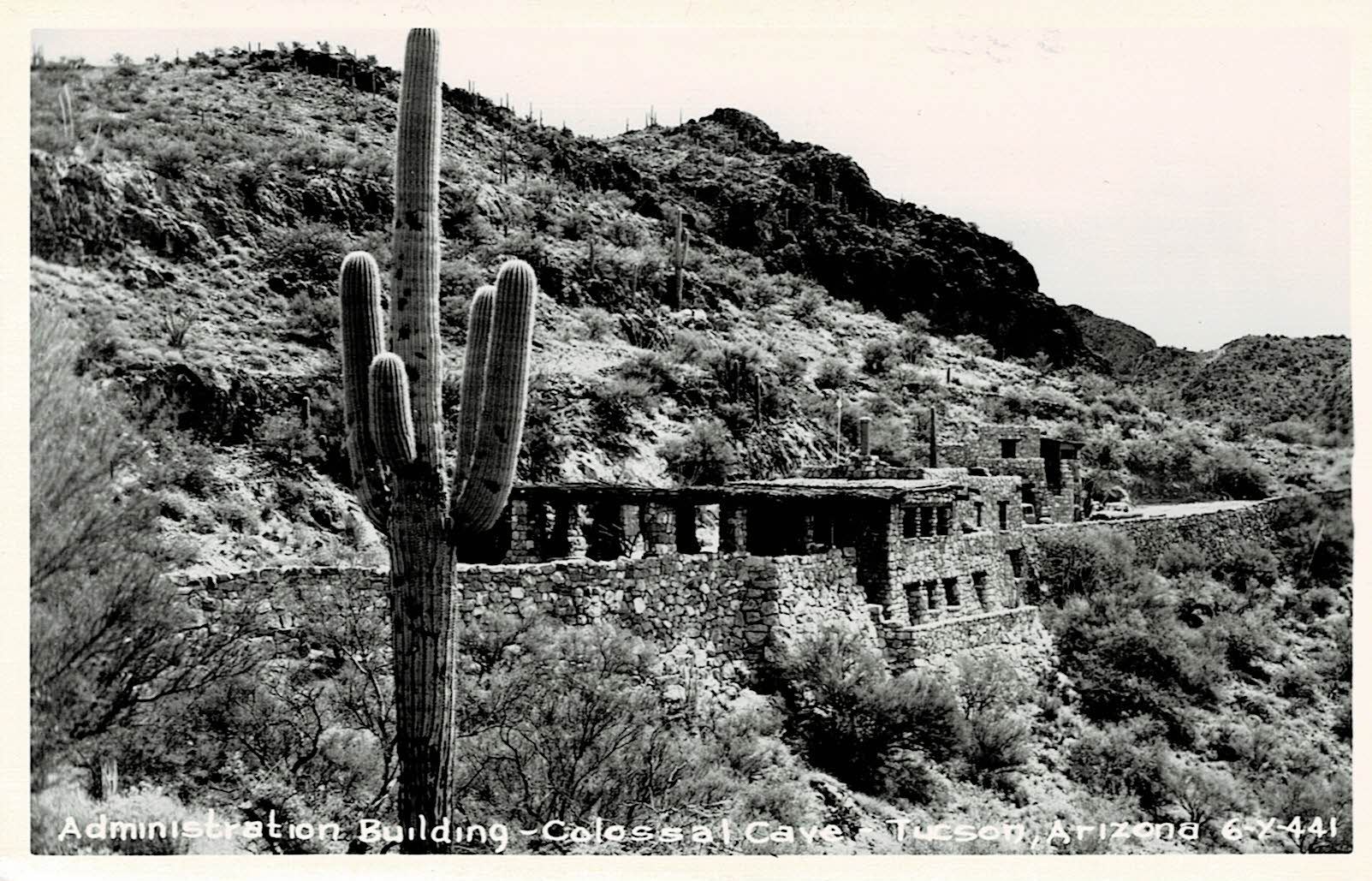
All Photos © by Schannep Ventures L.L.C. ALL RIGHTS RESERVED (You may use these photographs with credit given to me :)
First of all, Colossal Cave is a large cave system in southeastern Arizona, near the community of Vail, approximately 22 miles Southeast of Tucson. Soloman Lick finds the cave in 1879. It contains about 3.5 miles (5.6 km) of passageways. As a result, temperatures inside average 70 degrees Fahrenheit (21 degrees Celsius) year-round.
In addition, the cave is an ancient karst cave, It is a “dry” cave. Additionally, the meaning of this is that its formations are completely dry, or “dead”, and do not grow. This is because the cave has water depositing limestone, but this source is no longer available. It instead feeds the “active” nearby Arkenstone Cave that continues to grow formations.
Finally, Colossal Cave is in use from 900 to 1450 AD by the Hohokam, Sobaipuri, and Apache Indians. Solomon Lick finds the cave in 1879. He is the owner of the nearby Mountain Springs Hotel. He is searching for stray cattle when he discovers the entrance to the cave. In addition, the cave is then in use as a guano source, and a tunnel, 25 metres (82 ft) long, was built in 1905. It produces a total of seven train cars of guano. The deposit plays out, and the tunnel is no longer in use.
Portions of the above text are from Wikipedia ©
Vintage Tucson 1990 – 2024 © Schannep Ventures L.L.C. ALL RIGHTS RESERVED
